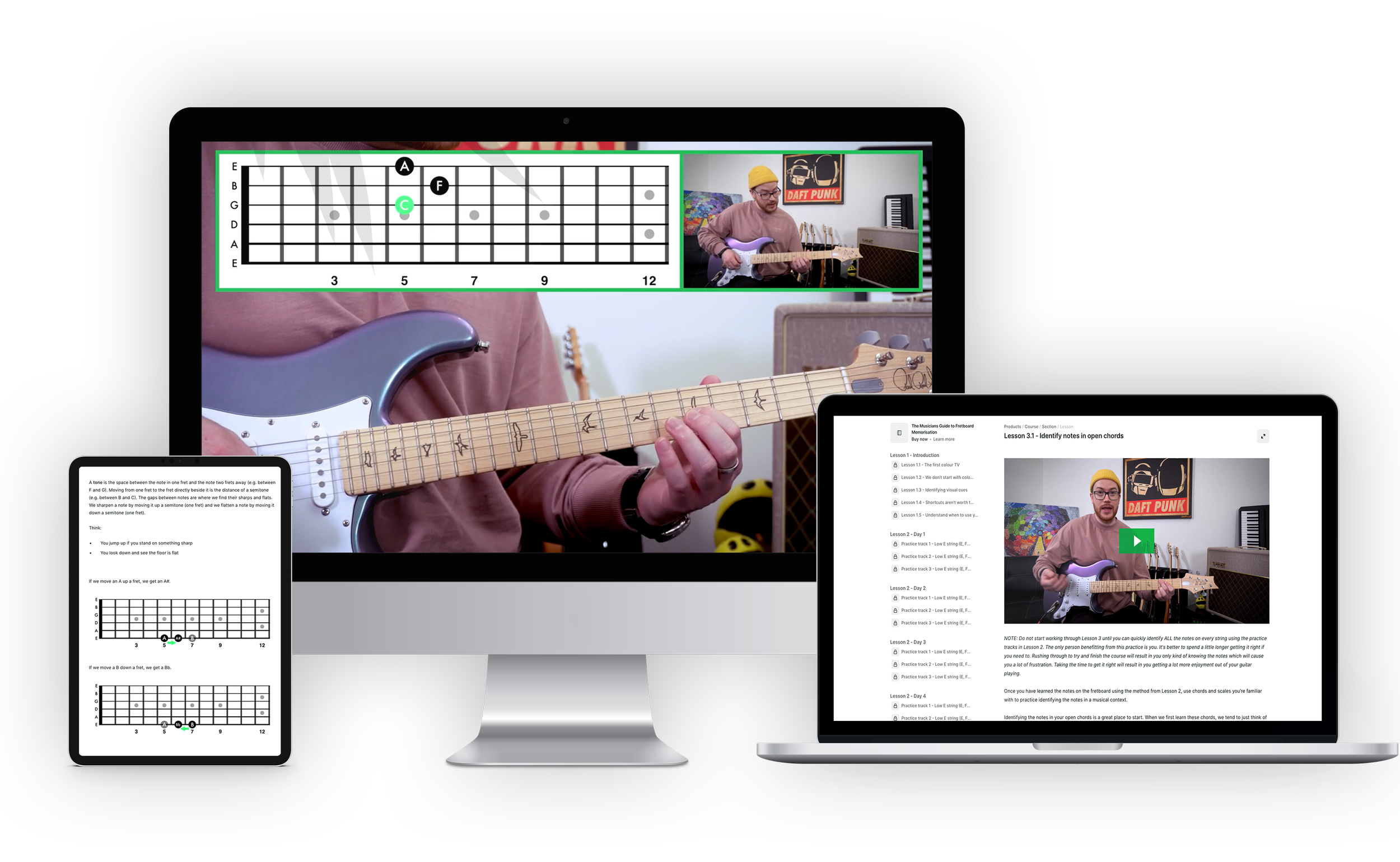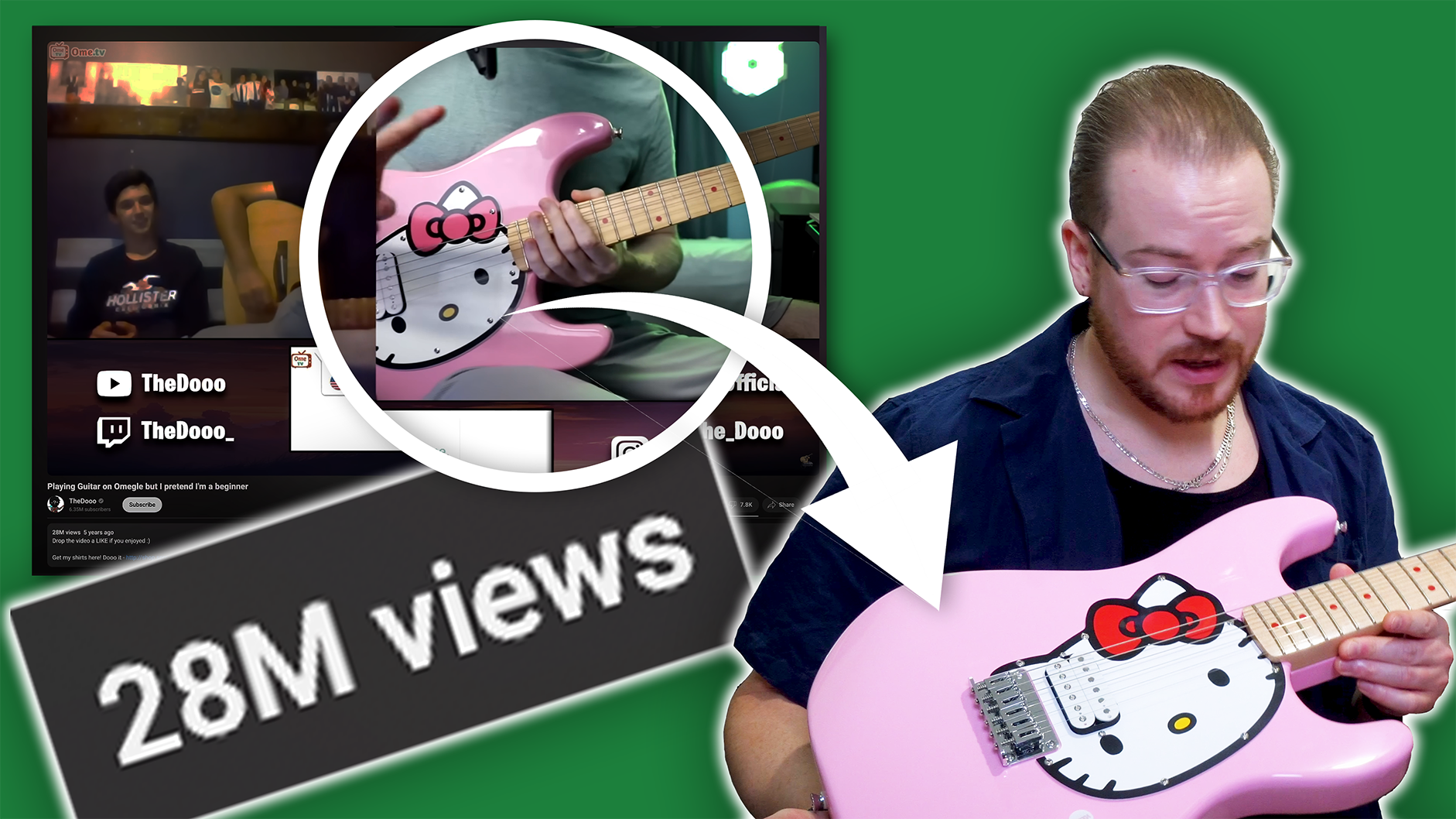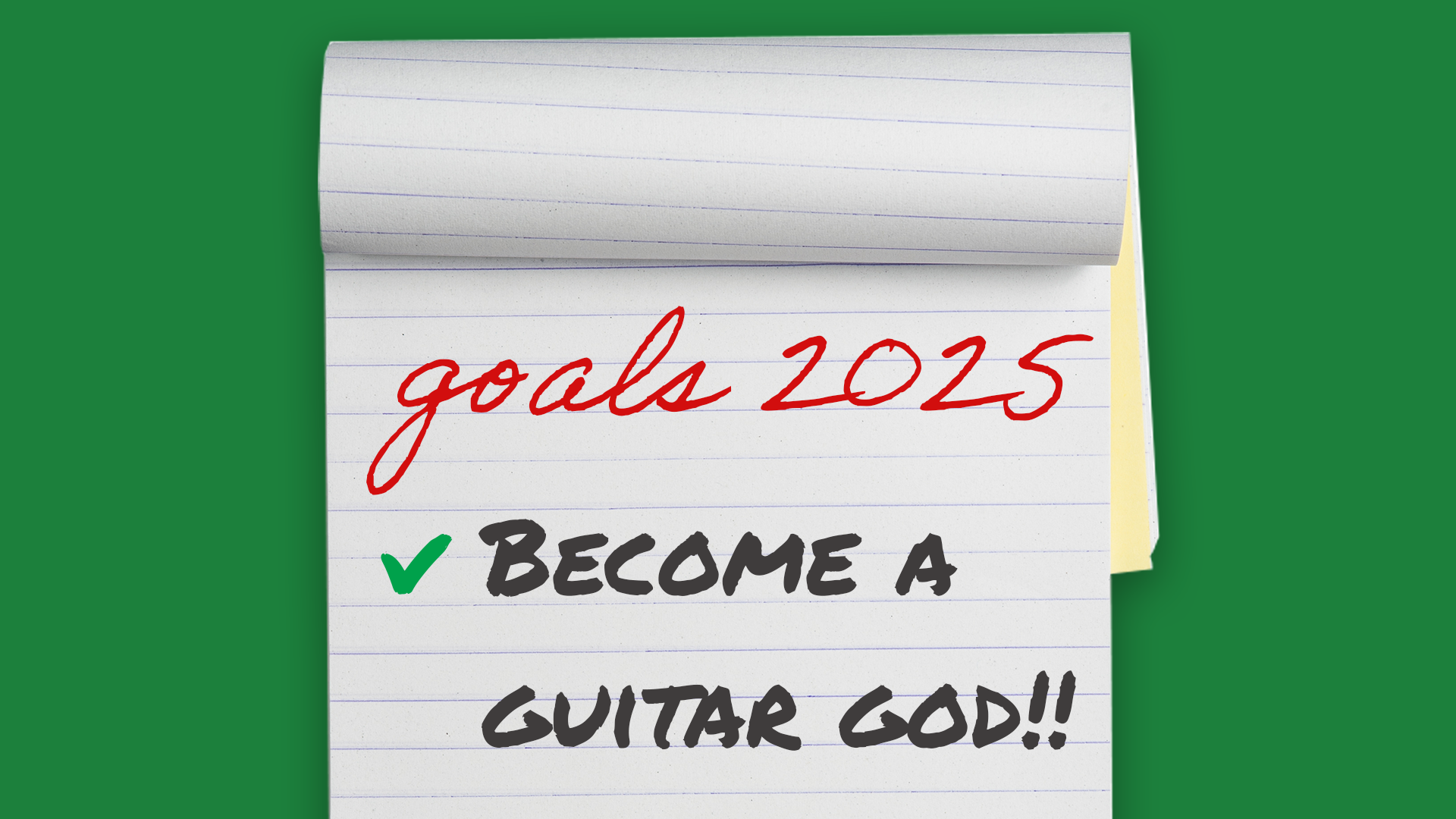How to figure out the key of a song by ear
In this lesson, you’ll learn two easy ways to figure out the key of a piece of music. In the first example, we’ll start with a chord chart and use the natural pattern of chords in a key to figure out which key we are playing in. In the second example, we’ll use our major scale to find the key of a piece of music while listening to the track.
These aren’t just ‘hacks’. You’re going to learn how to use a couple of bits of music theory that you can build on in the future. But today, these tricks are going to help you start having more fun on the guitar immediately!
These tricks aren’t magic. Sometimes, you will come across a chord progression that uses advanced harmony and doesn’t behave according to these rules. However, the strategies you’ll learn in this lesson will work 80% of the time.
How to figure out the key of a song by looking at the chord chart
It’s frustrating when you’re looking at a chord chart and have no idea how to figure out the key of the song. Maybe it doesn’t tell you the key at the top of the chart. Or, maybe it does, but something isn’t quite sounding right and you think whoever wrote the chart might have made a mistake.
Unfortunately, this happens more than you’d think. The problem with a lot of the chord chart websites is that they are full of user-generated content. These users don’t necessarily have a great understanding of music theory. Even the most highly-rated chord chart can have mistakes. Being able to look at the chord chart yourself and easily figure out the key will help you see through these errors and enjoy the process of learning the song.
Check out this blog post for an in-depth look at ‘How to easily figure out the key of a song’.
Here’s the TL;DR:
Identify two major chords that would be next to each other if you lined the chords of the song up alphabetically. These will be the IV and V chords.
Count back through the chords in the key to figure out the I chord.
Once you have the I chord, find an instance of it in the progression.
Once you have found the primary chords (I, IV and V), check through the rest of the chords in the progression to make sure they fit with the chords you expect to see on each scale degree.
Discover how to learn the notes in a way that not only develops your fretboard fluency but reinforces your overall musicianship.
How to figure out the key of a song by listening to the recording
There are many reasons you might want to figure out the key of a song just by listening. Maybe there isn’t a chord chart and you need a starting point so you know which chords you’re listening for. Maybe you’re practising improvisation and need to know which scales you should be using to shred straight fire. Maybe you’re trying to learn the vocal melody (which is a great way to get ideas for more melodic playing by the way). Whatever the reason, this trick will get you there (80% of the time because we don’t do magic remember?)
First of all, you’ll need to know how to play your major scale. I recommend using the shape on the top string set for what we’re going to be doing here.
Fig. 1
This shape occurs in the top half of Pattern 1. Think of it as the classic minor pentatonic scale with a couple of added major notes.
Fig. 2
Am and C major are relative keys. This means they share the exact same notes but simply start in different positions. The same notes, played from two different starting points, give us two very different-sounding scales. Putting the same notes in a different context gives us an entirely different vibe!
For what we’re doing here, this just means that it doesn’t matter if a song is in a major key or its relative minor. We’ll still be playing over it using the exact same scale. Even if it does happen to be in a minor key, using the major scale to figure it out will produce exactly the same result.
There are two instances in the major scale shape where we have two notes right next to each other.
Fig. 3
We can see this a little more easily if we spread the notes across one string. In the example below you can also see that there are two places along the high E string where we could play a 1 3 4 pattern. One of these places will be the correct position for the major scale. The other position will sound bad (it will have a note that doesn’t belong in the major scale). We just need to try both positions and pick the one that sounds good.
Fig. 4
Check out the lesson video to see this trick in action.
Here’s the TL;DR:
Randomly play notes along the high E string until you find two next to each other that sound good.
Play through your major scale in this position to check if it sounds good.
If it sounds good, the root note of the major scale will be the key of the song.
If it sounds bad, repeat steps 1 - 3 to find the other position.
These tricks are two super useful tools to have in your musical toolbox.
You might need to try them a few times to get the hang of them. But, once you’ve got the process down, you’ll find you’re using them all the time!








